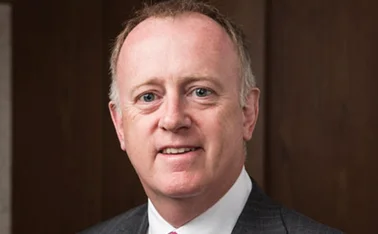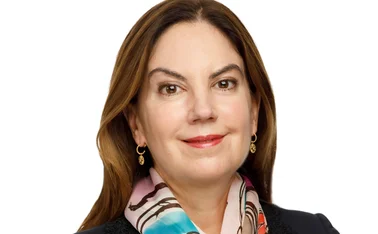
From the archives - 9/11 Terrorism: Ten years later...

A decade has passed since the attacks on the World Trade Center in New York. How has the market for terrorism policies responded and recovered in that time?
With the anniversary of 11 September 2001 upon us, many will be revisiting the day when the world’s worst terrorist attack, in terms of loss of life and property, took place. Insured losses for the attacks were more than $40bn (£24.8bn) covering classes such as property, business interruption, aviation, liability and contingency. Further compensation has since been made to around 10 000 workers left with health problems as a result of rescue and clean-up work.
In the immediate aftermath, property insurers, as stunned by the attacks as the rest of the world, enacted exclusions for terrorism. However, things have changed markedly over the past 10 years, with the industry showing a renewed confidence in the use of the product. But how did the terrorism policy recover? From a cover that appealed mainly to multi-nationals in high risk locations, terrorism insurance is now a policy that brokers have on the agenda for commercial clients of all sizes, in countries that once may have been viewed as safe havens.
The mass shootings by Anders Behring Breivik in Norway just weeks ago have shown that, whether acting alone or in a group, extremists can strike anywhere. The recent riots in the UK may not be the same as terrorism in its most obvious sense — but no business wants to be told it is not covered.
London leads the market in terms of capacity and expertise and, notably, a number of the main syndicates and brokers have been growing. Last month, Canopius Group announced it was taking on new underwriters with Tim Davies and Jennie Beard to join its team. Meanwhile in March, Brit Insurance announced the appointment of Charles Barrett in a similar role. Notably, the terrorism insurance market is now far broader — it is often viewed as being part of the political risk class – and the threat of Al Qaeda is one of great multitude. The wider issue of terrorism means underwriters need to make detailed checks before issuing a policy, while operating under pressure of competition in a lively market. Davies comments: “You often need to underwrite on a bespoke basis. If it was a power plant in Pakistan, for example, we would want chapter and verse about security, but also about the company and its social footprint. Are they in harmony with the local community? Is what they are doing harmful?”
Sparking demand
Davies continues: “Of course, the Arab Spring has also had a big impact, and would have sparked demand in areas like Manama in Bahrain. In the higher risk areas, capacity does get used up, but syndicates are still prepared to provide cover. The death of Osama bin Laden has certainly not reduced demand; he was basically just the head of a franchise.”
Stephen Ashwell, global head of terrorism with Hiscox, says his company has been in the market for the long haul and cut its teeth on events prior to 11 September 2001 by writing cover in trouble spots such as Nepal, Sri Lanka and Columbia. He comments: “After the attack, the original T3 wording became established, which was focused on property damage with extensions available for business interruption.
“Now companies are more interested in multi-line coverage and want to make sure they do not have gaps or duplication.” Ashwell adds, as has been shown with the rise in use of social media during the Arab Spring, uprisings happen fast. Policyholders will want to know they have cover that will respond to property damage and or business interruption: “Risks are still being placed in countries like Libya, Tunisia, Algeria and Syria. Likewise, with Iraq — if there was no coverage, things like cargo flights would grind to a halt.”
However, he adds, the media portrayal of political violence can sometimes create a misleading image: “In Bangkok, a couple of years ago, there were severe political disturbances, but the reality was that some large department stores were specifically targeted rather than the whole city being affected. There were claims and capacity was reduced, but insurance continues.”
Mike Burle, class terrorism underwriter for Liberty Syndicates, explains that the sector is a natural fit for Lloyd’s, which was providing cover long before September 2001. He explains it is not just the volatile Middle East countries that challenge underwriters. “Aggregate urban exposures are the big issue. Take someone like Donald Trump, who will have many properties in an area like Manhattan, where there are high levels of occupancy and a huge loss of revenue if there is an incident. You need to plot every location for the impact and this can lead to some huge sums insured.”
Turning point for terrorism cover
“Each syndicate has its own philosophy,” Burle explains. “Some will not touch Afghanistan or Iraq, whereas others will be prepared to underwrite in these regions, subject to there being good security. Some see hotels as being porous and so too high risk, whereas others will cover these, along with major retailers and sporting venues. Many of our risks are on a bespoke basis. We are also seeing syndicates providing more cover for emerging markets.” However, Burle believes that the 2001 attacks on American soil were a turning point for terrorism cover. “It led to the property insurers pulling out and a market being created for standalone cover. It also led to a large rise in take-up of the product.
“There have been other major incidents like the Madrid train bombings in 2004, the London attacks on 7 July 2005 and the 1995 Oklahoma bombing, but these did not change the market,” he adds. As with insurers, brokers specialising in placing terrorism business are in high demand and are placing business beyond regions known for attacks.
Kelly Crouch, head of terrorism for JLT, comments: “This is a massive market and we advise on everything from downtown Manhattan to emerging markets.” She adds: “Terrorism risk has reached board level. Many were shocked by what happened in Norway, they want to know what cover they have in place. And syndicates want to cover a broad spectrum of locations; they don’t want too much concentration in any one region.”
Andrew Stuart, head of terrorism and political risk for Cooper Gay, says he has advised on a huge variety of risks from oil and gas plants to Indian film crews. “Lloyd’s is hungry for business and this is a market that has lots of untapped business. Property underwriters do not have the time to do the due diligence, which has prompted the rise of specialists.” He adds: “Of course, there are always going to be things that are impossible to risk manage and budgetary cuts are a concern but, as the market grows, insurers have shown they can take on increasingly big risks.” The recent events in the Arab world have served to further complicate the terrorism landscape. According to David Eliot, senior account handler for Miller Insurance Services, recent insurrections have created a “blurred picture” in terms of coverage for insurers.
“You can get a lone wolf as happened in Norway or vast numbers of protestors as in Thailand. But, the insurance market has shown it can meet requirements. Buyers are more sophisticated and I can only see the market growing.”
The US runs the Terrorism Risk Insurance Program Reauthorization Act of 2007 scheme as a reinsurance programme and insurers offer wrap policies to cover for gaps. But, President Obama has spoken of ending this and it could be viewed as a possible way to reduce the deficit — which, at the same time, could also boost opportunities for insurers.
While memories of 11 September 2001 are still as raw for many as they were a decade ago, insurers have learnt from the intervening years and changed the market. The rising number of providers and talent in the sector is evidence of its resilience and continuing demand.
Only users who have a paid subscription or are part of a corporate subscription are able to print or copy content.
To access these options, along with all other subscription benefits, please contact info@postonline.co.uk or view our subscription options here: http://subscriptions.postonline.co.uk/subscribe
You are currently unable to print this content. Please contact info@postonline.co.uk to find out more.
You are currently unable to copy this content. Please contact info@postonline.co.uk to find out more.
Copyright Infopro Digital Limited. All rights reserved.
As outlined in our terms and conditions, https://www.infopro-digital.com/terms-and-conditions/subscriptions/ (point 2.4), printing is limited to a single copy.
If you would like to purchase additional rights please email info@postonline.co.uk
Copyright Infopro Digital Limited. All rights reserved.
You may share this content using our article tools. As outlined in our terms and conditions, https://www.infopro-digital.com/terms-and-conditions/subscriptions/ (clause 2.4), an Authorised User may only make one copy of the materials for their own personal use. You must also comply with the restrictions in clause 2.5.
If you would like to purchase additional rights please email info@postonline.co.uk







